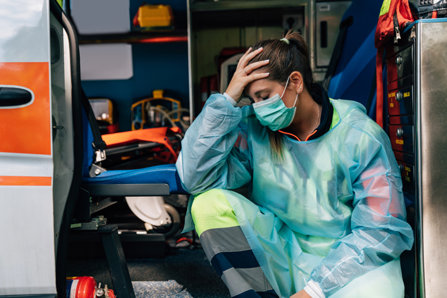A New Drug Alert: Xylazine in Fentanyl, Heroin, Other Illicit Drug Supplies

One thing is true about our national drug problem: It never stays the same for long. Anyone wanting to keep up with this massive national health problem had better be nimble.
At the moment, there is yet another drug for any vulnerable person to be warned about. In some drug markets, xylazine is contaminating drug supplies, particularly heroin and fentanyl. Xylazine is a non-opioid sedative, muscle relaxant and analgesic. It is an analog of clonidine which means it is similar chemically and has similar effects to this anti-anxiety medication.
It’s not controlled by the Drug Enforcement Administration because it only has FDA approval for veterinary use, not human use. When vets use it, it’s called Rompum and if you have ever spent time in stables, you’ve probably heard of it. At one time, it was tested on humans but these tests were abandoned when it proved to cause severe drops in blood pressure.
Drug dealers are using xylazine to cut (dilute) heroin, fentanyl and cocaine supplies, a process that gives them more product to sell. While xylazine has mostly been found in Puerto Rico since the early 2000s, it has since arrived in the Continental United States. Also, some drug users intentionally acquire and use this drug as has been done in Puerto Rico for years.

Xylazine has been found in drug supplies or the bodies of those who have overdosed primarily in Pennsylvania, Ohio, Maryland, Connecticut and Michigan. One study found that xylazine was present in nearly one-third of Philadelphia fatal overdoses. In Michigan, when authorities began testing for this drug, they found it in 83 cases of fatal overdose. Every one of those cases also involved fentanyl, indicating a strong likelihood that the xylazine was in the fentanyl they obtained.
Drug users refer to this drug as “tranq” because it acts as a sedative. They may intentionally add it to an opioid such as fentanyl or heroin or they may substitute it for an illicit opioid.
An illicit drug user may be aware that their drug supplies are cut with xylazine but they may not be aware of the harm that can result from its use.
Effects of Xylazine
According to the Drug Enforcement Administration, the toxic effects of xylazine include:
- Blurred vision
- Disorientation
- Respiratory depression
- Reduced breathing
- Central nervous system depression
- Low blood pressure
- Slowed heart rate
- Drowsiness
- Staggering
- Coma
- Addiction
- Death
Because it increases the heart-slowing effects of opioids or alcohol, it can boost the risk of fatal overdose from either drug.
Xylazine in America’s Illicit Drugs
In Puerto Rico, xylazine is called anestecia de caballo or “horse anesthetic." In 2010, xylazine was present in very few overdose deaths in America. By 2016, our situation was very different. Researchers analyzed data on overdose deaths from heroin, fentanyl or both from the Philadelphia Medical Examiner’s Office. They reported that xylazine was detected in 2% of 1,854 unintentional overdose deaths from heroin, fentanyl or both between 2010 and 2015. This percentage increased to 11% in 2016, 10% in 2017, 18% in 2018 and 31% in 2019.
Now that xylazine provides a popular method for drug dealers to adulterate their products, it becomes necessary to warn those who are dependent on drugs about the potential harm they may suffer from its presence.

Horrific Effects
One of the worst effects of misusing xylazine is open skin ulcers. But calling them skin ulcers is hardly doing them justice. It’s not even appropriate to include images of these “ulcers” in this report because of their revolting nature.
The injuries caused by this drug include areas of flesh that have been eaten away right down to the bone. This injury usually occurs when the drug abuser misses the vein and injects the drug directly into the flesh.
An investigation in San Juan, Puerto Rico of 89 drug users found that nearly 81% were using xylazine and 35% were suffering ulcers of this type. More than 20% had overdosed on this drug at least once.
Because of the pain associated with these ulcers, drug users are motivated to keep injecting xylazine into the affected areas. This, of course, promotes worsening ulcers and addiction. Some of these drug users have lost limbs to this problem.
Unfortunately, we can expect an increase of the number of Americans suffering from these devastating ulcers if xylazine continues to be used to cut illicit drug supplies.
Narcan Won’t Reverse a Xylazine Overdose

When a person overdoses on an opioid, another drug called Narcan (generic name: naloxone) will reverse the effects of the opioid, bringing the drug user back from an overdose. When the drug that was used was fentanyl, this opioid is so powerful that it may take several doses of Narcan to reverse the overdose.
However, when xylazine is mixed with fentanyl, a first responder can give the unconscious person Narcan but this remedy won’t reverse the effects of xylazine. There is no antidotal remedy for a xylazine overdose.
The only effective way to avoid exposure to xylazine is to overcome addiction and avoid all drugs. There’s no way to know what drugs will be adulterated with xylazine in the future.
Sources:
- https://www.drugs.com/clonidine.html
- https://today.wayne.edu/medicine/news/2020/11/02/michigan-poison-center-issues-warning-related-to-xylazine-abuse-40885
- https://www.deadiversion.usdoj.gov/drug_chem_info/Xylazine.pdf
- https://pubmed.ncbi.nlm.nih.gov/24769343/
- https://www.capitalgazette.com/news/crime/ac-cn-drug-bust-follow-20181031-story.html
- https://www.woodtv.com/news/allegan-county/officials-seeing-more-ods-involving-animal-tranquilizer/
- https://www.healio.com/news/primary-care/20210203/xylazine-found-in-onethird-of-fatal-opioid-overdoses-in-philadelphia
- https://abc6onyourside.com/news/local/franklin-co-coroner-warns-about-overdose-deaths-involving-animal-anesthetic
- https://pubmed.ncbi.nlm.nih.gov/33031124/
- https://www.ncbi.nlm.nih.gov/pmc/articles/PMC3080818/
Reviewed by Claire Pinelli, ICAADC, CCS, RAS, LADC, MCAP LCDC


 ®
®